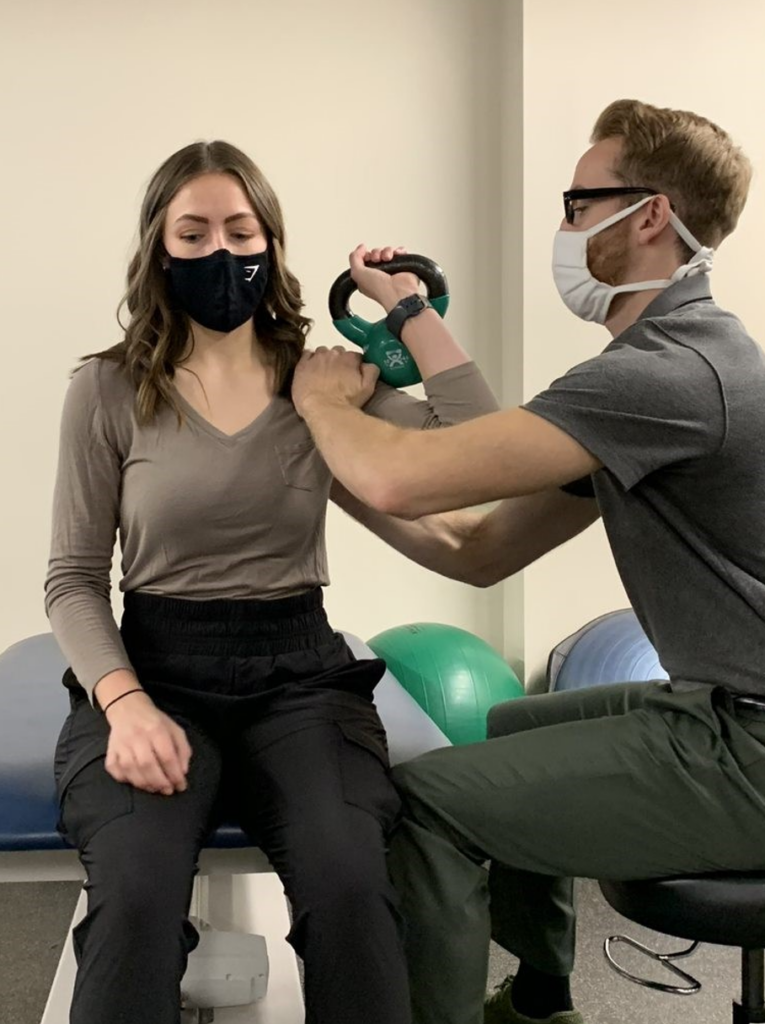Have you heard of an industrial athletic trainer? You may know that athletic trainers have been steadily pushing outside of athletics, as other industries have discovered the benefits of having a highly trained healthcare provider on-staff. Athletic trainer job settings are increasingly varied, with athletic trainers being found in doctor’s offices, rehabilitation clinics, and military bases. But what exactly is an industrial athletic trainer? What do they do? Who hires them? And why? Let’s take a moment to explore this growing profession.
What is an athletic trainer?
Athletic trainers are highly skilled health care professionals who address issues such as injury prevention, assessment, treatment, and rehabilitation. Athletic trainers work primarily with physically active populations, such as athletes. However, they are increasingly being utilized in industrial settings in which employees may be exposed to intense physical demands, such as manufacturing assembly lines, or even with astronauts at NASA. Many of these physical demands are often similar to those in athletic settings. As a result, the injuries, ailments, and conditions these “industrial athletes” mirror their athletic counterparts.
What is the role of an athletic trainer in an industrial site?
To put it briefly: they keep employees (or “industrial athletes”) healthy. Most athletic trainers in industrial settings focus primarily on injury prevention. They may walk the manufacturing floor or assembly line and see how people move as part of their job duties. This focus on preventative care helps retain employees, as well as reducing time and money lost to the company due to employee injury. This presents a win-win scenario for both the employees and employer. Some areas of focus are body mechanics, strategic planning and metrics, and wellness initiatives.
Body Mechanics
Athletic trainers specialize in the mechanics of the working body. A body can move in ways that helps avoid muscle fatigue and the chance of injury, or it can move in ways that increase fatigue and chance of injury. Athletic trainers can recognize dangerous work patterns and help design intervention strategies. Athletic trainers can train employees in safer work practices and even help redesign workstations.
Strategic Planning and metrics
Athletic trainers in industrial settings can assist with the development of strategic planning. An athletic trainer has the technical knowledge to bridge the gap between goals (such as employee safety and retention) and implementation. Also, they can collect metrics and monitor outcomes to keep moving the company towards their strategic goals.
Wellness initiatives
In industrial settings, athletic trainers will often design and implement wellness initiatives. They may hold a workshop on proper body mechanics, or how to avoid common injuries. They also may design safety posters or educate on nutrition and sleep. Unlike some healthcare professions that focus on disease treatment, athletic trainers often focus on the preventative side, as well as how to improve a person’s wholistic health. An athlete or industrial employee who is not getting adequate nutrition or is suffering from a mental illness is not going to be able to perform at their peak. By focusing on the whole person (rather than a checklist of symptoms) athletic training solutions are much broader than those in other disciplines and are well-poised to help active people reach their potential.
An emerging field
Although athletic trainers are not very common in industrial sites yet, this is a growing field. Here at the University of Idaho, we are seeing many students interested in industrial settings, and we have connections with some large businesses (such as Amazon) for potential clinical rotation sites. More and more industrial settings are realizing the benefits of having an athletic trainer on-staff, especially to drive-down healthcare costs, and we’re excited to help train the next generation of industrial athletic trainers.
